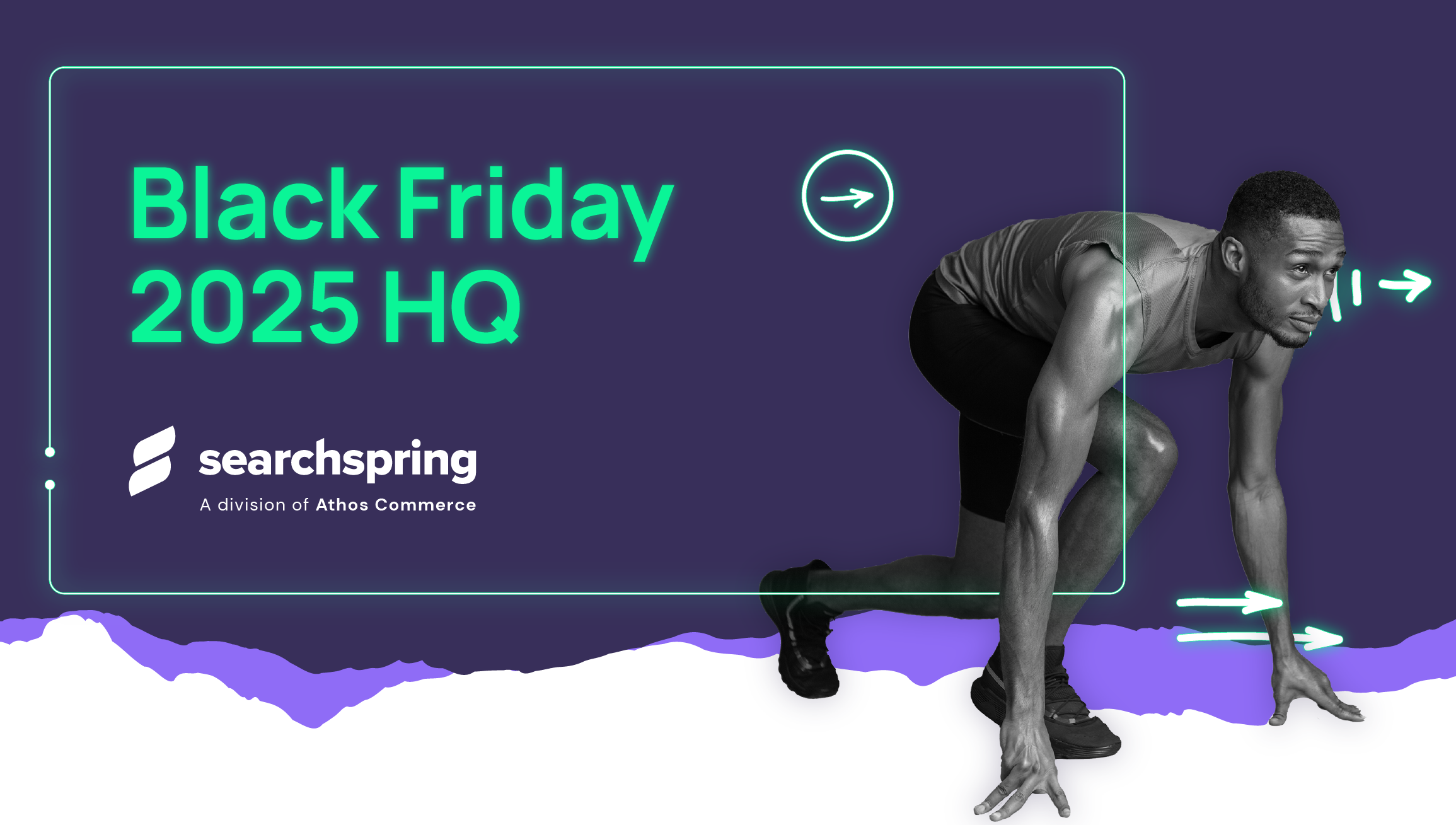In-store shopping has made a remarkable comeback in recent years. According to a study by Ryder, 61% of shoppers in 2024 flocked to physical retail stores because they enjoyed the experience, including the ability to see and try products in person and compare them side by side—an increase of 21% over the previous year. However, shoppers no longer tread a straight and narrow path to purchase.
The online shopping experience is now truly omnichannel. For example, the same study reveals that 77% of consumers search for items on a mobile device while in-store.
Additionally, 80% of shoppers surveyed in the Adobe 2024 Digital Trends report say consistent and seamless interactions across different channels are “important” or “critical.”
The path to purchase can be as individual as every customer. Retailers must consider how to engage shoppers at their preferred channels and touchpoints. Although shoppers are returning to physical stores in droves, retailers who reinvent the online shopping experience to drive consistent, memorable journeys across all channels stand to gain their shoppers’ favor (and purchases).
So, how can retailers make online as enticing as in-store?
A retailer’s digital storefront is more than just a virtual showroom. It has the power to become an intuitive, personalized, seamless experiential differentiator. Although brick-and-mortar stores offer tactile benefits, the right ecommerce tech stack can deliver convenient, personalized, time-saving experiences that keep shoppers coming back.
Let’s explore some of the top advantages online retailers can tap into and how to refine your digital touchpoints.
Ease of Finding and Comparing Products and Retailers
Take a moment to consider the time it would take to visit five different physical stores to check the pricing and availability of a single common product sold by all. Depending on the distance between stores, you may need to set half a Sunday aside for this task. Now, think about laying back on a lazy Sunday morning browsing, comparing, and purchasing products online. Those with fast tab-switching fingers can complete that shopping journey before a cup of coffee goes cold.
How can retailers help shoppers complete their online product searches even faster? Ensure products are visible on search engine results pages (SERPs) and have enticing Google Shopping listings with complete, relevant information.
Reviewing your product metadata strategy can help you get found on SERPs. At the same time, tools like Intelligent Reach—a division of Athos Commerce can make your Google Shopping listings shine with the most relevant information and imagery. The platform uses advanced A/B and multivariate testing and automated product feed updates to ensure shoppers seeing your listings find them irresistibly appealing. Is it time to start encouraging those click-throughs?
Marketplace Amplification
Statista survey data shows that marketplaces are now the number one destination, cited by 32% of shoppers worldwide, for starting a search for products online.

By making your products visible (and easily found) on marketplaces, you can amplify your presence and connect with shoppers at this critical touchpoint. Intelligent Reach again comes to the rescue by optimizing marketplace product listings, which you can tailor to each channel.
The Intelligent Reach Marketplaces Module also enables real-time stock synchronization and order management to drive more seamless shopping experiences.
A Fast Shop Is a Good Shop
Most shoppers are just like retailers: constantly busy and juggling multiple priorities. So, the need for speed is real, and another trump card the online shopping experience holds compared to in-store—when you set your digital store up with speed in mind.
While online shoppers already bypass the need to search through isles of products or racks of clothes to find what they want, there are still more ways to make their online journey fast and efficient.
Think about how your shoppers search for products. Do they all use the same terminology? Baymard Institute research shows that 70% of leading ecommerce sites’ search functionality doesn’t return relevant results for product type synonyms. What does this mean? Shoppers must use the exact name of the product or the seller’s jargon to find the product they want. Additionally, 34% of sites don’t return valuable results when shoppers search for a product model number or misspell a single character in a product title.
Synonyms are a powerful way to return more relevant results for every on-site search query and speed up the shopping experience. Unsure of what customers are actually searching for? Ecommerce solutions like Searchspring include zero results reporting that shows what Google Analytics doesn’t—the exact queries used for every single search. Keen to learn more?
On-Demand Demo

Let Your Customers Tell the Story
Another notable advantage of online shopping lies in user-generated content (UGC)—genuine reviews, photos, and ratings from other shoppers. In physical stores, shoppers often place their reliance on salespeople for advice. However, that advice can sometimes be a little biased. Conversely, the online experience enables shoppers to tap into hundreds, thousands, or even hundreds of thousands of unbiased opinions.
A shopper wondering how a couch will hold up over time may gain deeper insights through the reviews of customers using the product every day. Instead of guessing how the fabric of a garment feels or moves, shoppers can read feedback from verified buyers or see real-life social post feeds. This kind of social proof can be just what shoppers need to move from a browsing to a buying mindset.
Retailers allowing customers to tell the story of their products through reviews and community-driven content can help shoppers feel informed and empowered.
Hyper-Personalization: a Personal Shopping Experience for Every Customer
Personalization is where the online experience shines brightest. Imagine walking into a store where a personal shopper instantly knows your style, preferences, and past purchases. This level of individual connection is practically impossible to maintain and scale in a physical setting. Yet online, it can be the (gold) standard of shopping.
AI-driven personalized product recommendations can understand each individual’s browsing and buying behaviors, product preferences, and shopping intentions. Say you’re a fashion retailer with a wide range of collections, including a bridal range. A Generative Discovery platform like Searchspring gets to know how each consumer shops throughout their journey.
A shopper can search for a “strapless pale blue dress for bridesmaids” using this natural language. Results show hyper-relevant items that match color and occasion needs. As shoppers click through to product display pages (PDPs), the defined intent of dressing for a wedding can prompt recommendation carousels to show other garment styles, shoes, bags, accessories, and more.
Personalization doesn’t just enhance the shopping experience; it also drives revenue. Peltz Shoes saw a 43% jump in conversion attributed to personalized search and merchandising during a targeted campaign. Retailers can build strong connections with shoppers by making them feel understood—and those connections translate to purchases. Access your complimentary copy of Searchspring’s Generative Discovery Playbook for more ideas about driving optimized, conversion-focused shopping experiences.
The Future of Online Shopping: Effortless, Engaging, and Always Evolving
While in-store shopping brings a unique tangible aspect to the end-to-end shopping experience, the shopping journey in 2025 is anything but linear. Consumers move fluidly between digital and physical channels as they research, check reviews, see and feel in-store, browse on mobile while in-store, and more. The one constant is that shoppers expect seamless interactions across many micro-conversion touchpoints.
For retailers, the challenge isn’t choosing between in-store and online; it’s ensuring their digital presence doesn’t just support but leads the shopping experience. With the right ecommerce strategies (and tech stack), retailers can offer intuitive online product discovery, AI-powered personalization, and deep engagement that leads to conversion.
The next time you start your own shopping journey for a new outfit or that comfy couch, think about how many digital touchpoints you interact with—and how you can make a similar journey even more memorable for your customers.




